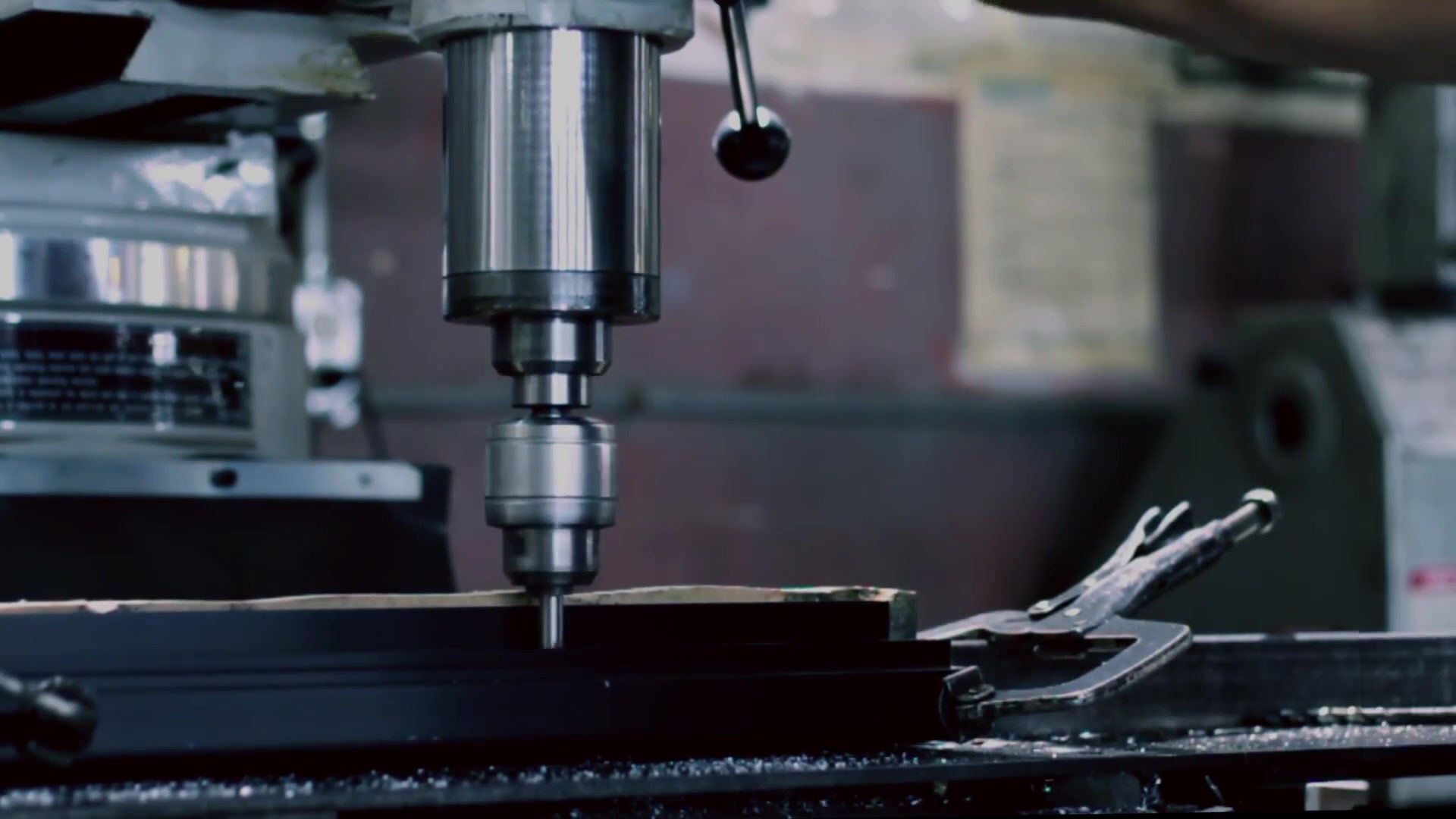


Global Custom Manufacturer, Integrator, Consolidator, Outsourcing Partner for a Wide Variety of Products & Services.
We are your one-stop source for manufacturing, fabrication, engineering, consolidation, integration, outsourcing of custom manufactured and off-shelf products & services. We also private label / white label your products with your brand name if you wish.
Choose your Language
-
Custom Manufacturing of Parts, Components, Assemblies, Finished Products, Machines and Industrial Equipment
-
Domestic & Global Contract Manufacturing
-
Manufacturing Outsourcing
-
Domestic, Global Procurement of Industrial Products
-
Private labeling / White Labeling your Products with your Brand Name
-
Product Finding & Locating Services
-
Global Design and Channel Partnership
-
Engineering Integration
-
Engineering Services
-
Global Consolidation, Warehousing, Logistics
The type of glass manufacturing we offer are container glass, glass blowing, glass fiber & tubing & rod, domestic and industrial glassware, lamp and bulb, precision glass moulding, optical components and assemblies, flat & sheet & float glass. We perform both hand forming as well as machine forming.
Our popular technical ceramic manufacturing processes are die pressing, isostatic pressing, hot isostatic pressing, hot pressing, slip casting, tape casting, extrusion, injection moulding, green machining, sintering or firing, diamond grinding, hermetic assemblies.
We recommend that you click here to
DOWNLOAD our Schematic Illustrations of Glass Forming and Shaping Processes by AGS-TECH Inc.
DOWNLOAD our Schematic Illustrations of Technical Ceramic Manufacturing Processes by AGS-TECH Inc.
These downloadable files with photos and sketches will help you better understand the information we are providing you below.
• CONTAINER GLASS MANUFACTURE: We have automated PRESS AND BLOW as well as BLOW AND BLOW lines for manufacturing. In the blow and blow process we drop a gob into blank mold and form the neck by applying a blow of compressed air from top. Immediately following this, compressed air is blown a second time from the other direction through the container neck to form the pre-form of the bottle. This pre-form is then transferred to the actual mold, reheated to soften and compressed air is applied to give the pre-form its final container shape. More explicitly, it is pressurized and pushed against the walls of the blow mold cavity to take its desired shape. Finally, the manufactured glass container is transfered into an annealing oven for subsequent reheating and removal of stresses produced during the molding and is cooled in a controlled fashion. In the press and blow method, molten gobs are put into a parison mold (blank mold) and pressed into the parison shape (blank shape). The blanks are then transfered to blow molds and blown similar to the process described above under “Blow and Blow Process”. Subsequent steps like annealing and stress relieve are similar or the same.
• GLASS BLOWING : We have been manufacturing glass products using conventional hand blowing as well as using compressed air with automated equipment. For some orders conventional blowing is necessary, such as projects involving glass art work, or projects that require a smaller number of parts with loose tolerances, prototyping / demo projects….etc. Conventional glass blowing involves the dipping of a hollow metal pipe into a pot of molten glass and rotating the pipe for collecting some amount of the glass material. The glass collected on the tip of the pipe is rolled on flat iron, shaped as desired, elongated, re-heated and air blown. When ready, it is inserted into a mould and air is blown. The mould cavity is wet to avoid contact of the glass with metal. The water film acts like a cushion between them. Manual blowing is a labor intensive slow process and only suitable for prototyping or items of high value, not suitable for inexpensive per piece high volume orders.
• MANUFACTURING OF DOMESTIC & INDUSTRIAL GLASSWARE : Using various types of glass material a large variety of glassware is being produced. Some glasses are heat resistant and suitable for laboratory glassware whereas some are good enough for withstanding dishwashers for many times and are fit for making domestic products. Using Westlake machines tens of thousands of pieces of drinking glasses are being produced per day. To simplify, molten glass is collected by vacuum and inserted into moulds to make the pre-forms. Then air is blown into the moulds, these are transfered to another mould and air is blown again and the glass takes its final shape. Like in hand blowing, these moulds are kept wet with water. Further stretching is part of the finishing operation where the neck is being formed. Excess glass is burnt off. Thereafter the controlled re-heating and cooling process described above follows.
• GLASS TUBE & ROD FORMING : The main processes we use for manufacturing of glass tubes are the DANNER and VELLO processes. In the Danner Process, glass from a furnace flows and falls on an inclined sleeve made of refractory materials. The sleeve is carried on a rotating hollow shaft or blowpipe. The glass is then wrapped around the sleeve and forms a smooth layer flowing down the sleeve and over the tip of the shaft. In the case of tube forming, air is blown through a blowpipe with hollow tip, and in the case of rod forming we use solid tips on the shaft. The tubes or rods are then drawn over carrying rollers. The dimensions like wall thickness and diameter of the glass tubes are adjusted to desired values by setting the diameter of the sleeve and blowing air pressure to a desired value, adjusting the temperature, rate of flow of glass and speed of drawing. The Vello glass tube manufacturing process on the other hand involves glass that travels out a furnace and into a bowl with a hollow mandrel or bell. The glass then goes through the air space between the mandrel and the bowl and takes the shape of a tube. Thereafter it travels over rollers to a drawing machine and is cooled. At the end of the cooling line cutting and final processing takes place. The tube dimensions can be adjusted just like in the Danner process. When comparing the Danner to Vello process, we can say that Vello process is a better fit for large quantity production whereas the Danner process may be a better fit for precise smaller volume tube orders.
• PROCESSING OF SHEET & FLAT & FLOAT GLASS : We have large quantities of flat glass in thicknesses ranging from submilimeter thicknesses to several centimeters. Our flat glasses are of almost optical perfection. We offer glass with special coatings such as optical coatings, where chemical vapor deposition technique is used to put coatings such as antireflection or mirror coating. Also transparent conductive coatings are common. Also available are hydrophobic or hydrophilic coatings on glass, and coating that makes glass self-cleaning. Tempered, bulletproof and laminated glasses are yet other popular items. We cut glass into desired shape with desired tolerances. Other secondary operations such as curving or bending flat glass are available.
• PRECISION GLASS MOLDING : We use this technique mostly for manufacturing precision optical components without the need for more expensive and time consuming techniques like grinding, lapping and polishing. This technique is not always sufficient for making the best of the best optics, but in some cases like consumer products, digital cameras, medical optics it can be a less expensive good option for high volume manufacturing. Also it has an advantage over the other glass forming techniques where complex geometries are required, such as in the case of aspheres. The basic process involves loading of the lower side of our mold with the glass blank, evacuation of the process chamber for oxygen removal, near closing of the mold, fast and isothermal heating of die and glass with infrared light, further closing of the mould halves to press the softened glass slowly in a controlled fashion to the desired thickness, and finally cooling of the glass and filling the chamber with nitrogen and removal of the product. Precise temperature control, mould closure distance, mould closure force, matching the coefficients of expansion of the mold and glass material are key in this process.
• MANUFACTURE OF GLASS OPTICAL COMPONENTS AND ASSEMBLIES : Besides precision glass molding, there are a number of valuable processes we use for making high quality optical components and assemblies for demanding applications. Grinding, lapping and polishing of optical grade glasses in fine special abrasive slurries is an art and science for making optical lenses, prisms, flats and more. Surface flatness, waviness, smoothness and defect free optical surfaces require lots of experience with such processes. Small changes in environment can result in out of specification products and bring the manufacturing line to a stop. There are cases where a single wipe on the optical surface with a clean cloth can make a product meet the specifications or fail the test. Some popular glass materials used are fused silica, quartz, BK7. Also the assembly of such components requires specialized niche experience. Sometimes special glues are being used. However, sometimes a technique called optical contacting is the best choice and involves no material in between attached optical glasses. It consists of physically contacting flat surfaces to attach to each other without glue. In some cases mechanical spacers, precision glass rods or balls, clamps or machined metal components are being used to assemble the optical components at certain distances and with certain geometric orientations to each other. Let us examine some of our popular techniques for manufacturing high end optics.
GRINDING & LAPPING & POLISHING : The rough shape of the optical component is obtained with grinding a glass blank. Thereafter lapping and polishing are carried out by rotating and rubbing the rough surfaces of the optical components against tools with desired surface shapes. Slurries with tiny abrasive particles and fluid are being poured in between the optics and the shaping tools. The abrasive particle sizes in such slurries can be chosen according to the degree of flatness desired. The deviations of critical optical surfaces from desired shapes are expressed in terms of wavelengths of the light being used. Our high precision optics have tenth of a wavelength (Wavelength/10) tolerances or even tighter is possible. Besides surface profile, the critical surfaces are scanned and evaluated for other surface features and defects such as dimensions, scratches, chips, pits, specks...etc. The tight control of environmental conditions in the optical manufacturing floor and extensive metrology and testing requirements with state-of-the-art equipment make this a challenging branch of industry.
• SECONDARY PROCESSES IN GLASS MANUFACTURING: Again, we are only limited with your imagination when it comes to secondary and finishing processes of glass. Here we list some of them:
-Coatings on glass (optical, electrical, tribological, thermal, functional, mechanical...). As an example we can alter surface properties of glass making it for example reflect heat so that it keeps building interiors cool, or make one side infrared absorbing using nanotechnology. This helps keep the inside of buildings warm because the outermost surface layer of glass will absorb the infrared radiation inside the building and radiate it back to the inside.
-Etching on glass
-Applied Ceramic Labeling (ACL)
-Engraving
-Flame polishing
-Chemical polishing
-Staining
MANUFACTURING OF TECHNICAL CERAMICS
• DIE PRESSING : Consists of uniaxial compaction of granular powders confined in a die
• HOT PRESSING : Similar to die pressing but with the addition of temperature to enhance densification. Powder or compacted preform is placed into graphite die and uniaxial pressure is applied while the die is kept at high temperatures such as 2000 C. Temperatures can be different depending on the type of ceramic powder being processed. For complicated shapes and geometries other subsequent processing such as diamond grinding may be needed.
• ISOSTATIC PRESSING : Granular powder or die pressed compacts are placed in airtight containers and then into a closed pressure vessel with liquid inside. Thereafter they are compacted by increasing the pressure vessel’s pressure. The liquid inside the vessel transfers the pressure forces uniformly over the entire surface area of the airtight container. The material is thus compacted uniformly and takes the shape of its flexible container and its internal profile and features.
• HOT ISOSTATIC PRESSING : Similar to isostatic pressing, but in addition to pressurized gas atmosphere, we sinter the compact at high temperature. Hot isostatic pressing results in additional densification and increased strength.
• SLIP CASTING / DRAIN CASTING : We fill the mould with a suspension of micrometer sized ceramic particles and carrier liquid. This mixture is called “slip”. The mould has pores and therefore the liquid in the mixture is filtered into the mould. As a result, a cast is formed on the inner surfaces of the mould. After sintering, the parts can be taken out of the mould.
• TAPE CASTING : We manufacture ceramic tapes by casting ceramic slurries onto flat moving carrier surfaces. The slurries contain ceramic powders mixed with other chemicals for binding and carrying purposes. As the solvents evaporate dense and flexible sheets of ceramic are left behind which can be cut or rolled as desired.
• EXTRUSION FORMING : As in other extrusion processes, a soft mixture of ceramic powder with binders and other chemicals is passed through a die to acquire its cross-sectional shape and is then cut at desired lengths. The process is performed with cold or heated ceramic mixtures.
• LOW PRESSURE INJECTION MOLDING : We prepare a mixture of ceramic powder with binders and solvents and heat it to a temperature where it can easily be pressed and forced into the tool cavity. Once the moulding cycle is complete, the part is ejected and the binding chemical is burned off. Using injection molding, we can obtain intricate parts at high volumes economically. Holes that are a tiny fraction of a milimeter on a 10mm thick wall are possible, threads are possible without forther machining, tolerances as tight as +/- 0.5% are possible and even lower when parts are machined, wall thicknesses in the order of 0.5mm to a length of 12.5 mm are possible as well as wall thicknesses of 6.5mm to a length of 150mm.
• GREEN MACHINING : Using the same metal machining tools, we can machine pressed ceramic materials while they are still soft like chalk. Tolerances of +/- 1% are possible. For better tolerances we use diamond grinding.
• SINTERING or FIRING : Sintering makes full densification possible. Significant shrinkage occurs on the green compact parts, but this is not a big problem since we take into account these dimensional changes when we design the part and tooling. Powder particles are bonded together and porosity induced by the compaction process is removed to great extent..
• DIAMOND GRINDING : The World’s hardest material “diamond” is being used to grind hard materials like ceramics and precision parts are obtained. Tolerances in the micrometer range and very smooth surfaces are being achieved. Due to its expense, we only consider this technique when we really need it.
• HERMETIC ASSEMBLIES are those that practically speaking do not allow any exchange of matter, solids, liquids or gases between interfaces. Hermetic sealing is airtight. For example hermetic electronic enclosures are those that keep the sensitive interior contents of a packaged device unharmed by moisture, contaminants or gases. Nothing is 100% hermetic, but when we speak of hermeticity we mean that in practical terms, that there is hermeticity to the extent that the leak rate is so low that the devices are safe under normal environmental conditions for very long times. Our hermetic assemblies consist of metal, glass and ceramic components, metal-ceramic, ceramic-metal-ceramic, metal-ceramic-metal, metal to metal, metal-glass, metal-glass-metal, glass-metal-glass, glass-metal and glass to glass and all other combinations of metal-glass-ceramic bonding. We can for example metal coat the ceramic components so they can be strongly bonded to other components in the assembly and have excellent sealing capability. We have the know-how of coating optical fibers or feedthroughs with metal and soldering or brazing them to the enclosures, so no gases pass or leak into the enclosures. Therefore they are used for manufacturing electronic enclosures to encapsulate sensitive devices and protect them from the outer atmosphere. Besides their excellent sealing characteristics, other properties such as the thermal expansion coefficient, deformation resistance, non-outgassing nature, very long lifetime, nonconductive nature, thermal insulation properties, antistatic nature...etc. make glass and ceramic materials the choice for certain applications. Information on our facility producing ceramic to metal fittings, hermetic sealing, vacuum feedthroughs, high and ultrahigh vacuum and fluid control components can be found here: Hermetic Components Factory Brochure
